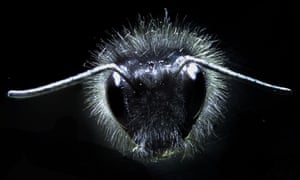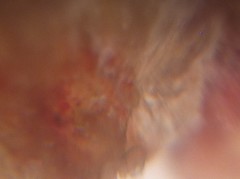Bumblebee’s electric field sensor identified
Mechanosensory hairs covering bumblebees’ bodies detect the small electrical fields emitted by flowers

“We were excited to discover that bees’ tiny hairs dance in response to electric fields, like when humans hold a balloon to their hair,” says lead author Gregory Sutton. “A lot of insects have similar body hairs, which leads to the possibility that many members the insect world may be equally sensitive to small electric fields.”
Bumblebees use the fine hairs covering their bodies to detect electrical fields produced by the flowers they feed on and pollinate, according to a new study by researchers at the University of Bristol. The findings, just published in Proceedings of the National Academy of Sciences, may help to solve the mystery of how insects and other terrestrial creatures detect and respond to electric fields.
It’s well known that bumblebees use their sense of smell, as well as visual cues such as the colour, shape, and patterning of flowers, to find nectar, and in 2013, biologist Daniel Robert and his colleagues reported the surprising finding that they can also detect floral electric fields.
The ability to detect electric fields was first discovered in sharks and rays, whose electrosensory organs consist of small tubular cavities filled with a conductive jelly that stays in equilibrium with the water; electrical changes in the jelly trigger impulses in the attached sensory nerve endings. Some land animals, such as the platypus, also use electroreception, but rely on organs that have to be submerged in water in order for them to do so. Air does not conduct electricity, however, so we still know very little about how the electric sense might work in insects and other land animals.
When flitting between flowers to forage for food, bumblebees accumulate a positively charged electric field around their bodies. Flowers, on the other hand, produce weak, negatively charged electrical fields. Robert’s team showed that these floral electric fields distort the bees’ own fields as the insects approach them, and that variations in the shape and size of flowers’ electric fields enable the bees not only to tell flowers apart from one another, but also to learn which ones are the best sources of food.
Now, Robert and his colleagues believe they have identified the honeybee’s electric sensor. They knew that spiders use mechanosensory hairs covering their bodies to detect fluid flow and the speed of sound particles, and that honeybee antennae move in response to the electrical fields produced by nestmates performing a waggle dance nearby, and so reasoned that one of these structures might also be involved in the electric sense of the bumblebee.
Mechanosensory hairs covering the bumblebee’s body move in response to an applied electric field. From Sutton, et al. (2016).
To test this, they mounted dead bees on pins and used lasers to measure the movements of antennae and mechanosensory body hairs in response to weak electric fields comparable to those produced by flowers in the wild. They found that both the antennae and the body hairs moved in response to the applied electric fields – the hairs, however, being shorter and more rigid than the antennae, moved more than ten times faster, and also deflected further, when the fields were applied.
Further experiments revealed that the mechanosensory hairs were significantly more sensitive to electric fields than the antennae. In response to the applied electric fields, the tips of the hairs deflected almost half a millimetre, movements that are large enough to be visible under the microscope (see video above).
The researchers then anesthetized bumblebees, mounted them on a small clay post, and inserted micro-electrodes into the nerve cells located at the base of the hairs and antennae, to determine how they respond to the applied electric fields. This revealed that the neurons associate with the mechanosensory hairs increased their firing rate in response to the electric fields, whereas those associated with the antennae increased their firing rates only in response to puffs of air or olfactory stimuli such a lavender oil.
These findings hint at the mechanism by which bumblebees detect electric fields. As a bee approaches a flower, the floral electric field distorts the field around the bee’s body, and these distortions deflect the mechanosensory hairs, causing in them a lever-like movement which triggers the nerve cells at their base to fire off signals to the brain.
“We were excited to discover that bees’ tiny hairs dance in response to electric fields, like when humans hold a balloon to their hair,” says lead author Gregory Sutton. “A lot of insects have similar body hairs, which leads to the possibility that many members the insect world may be equally sensitive to small electric fields.”
Reference
Sutton, G. P., et al. (2016). Mechanosensory hairs in bumblebees (Bombus terrestris) detect weak electric fields. PNAS, DOI: 10.1073/pnas.1601624113
Source: Bumblebee’s electric field sensor identified | Science | The Guardian












Hi, Timothy
I remember seeing a post on your YouTube site about tinnitus.
You were saying that you believed that the hissing etc sounds that TIs experience is not the same as what is actually a common health problem by non-TIs.
I wonder if you’d mind elaborating on why you think that we TIs are not experiencing tinnitus.
I’d guess that what we are hearing is a simulated variety resulting from being zapped by ELF or other electronic waves.
In fact, I think that – given an academic environment and the right instruments – it would be possible to confirm or deny this hypothesis.
After all, what we TIs really need is some hard scientific evidence to present to the world – it’s really the only way to build credibility for some of the bizarre things many of us have come across.
Thoughts?
LikeLike